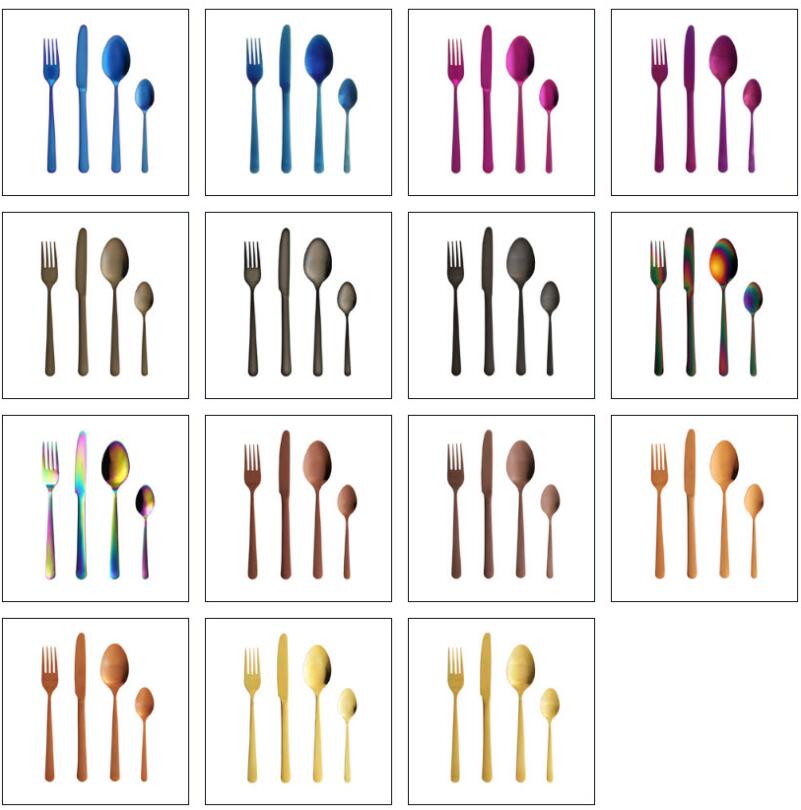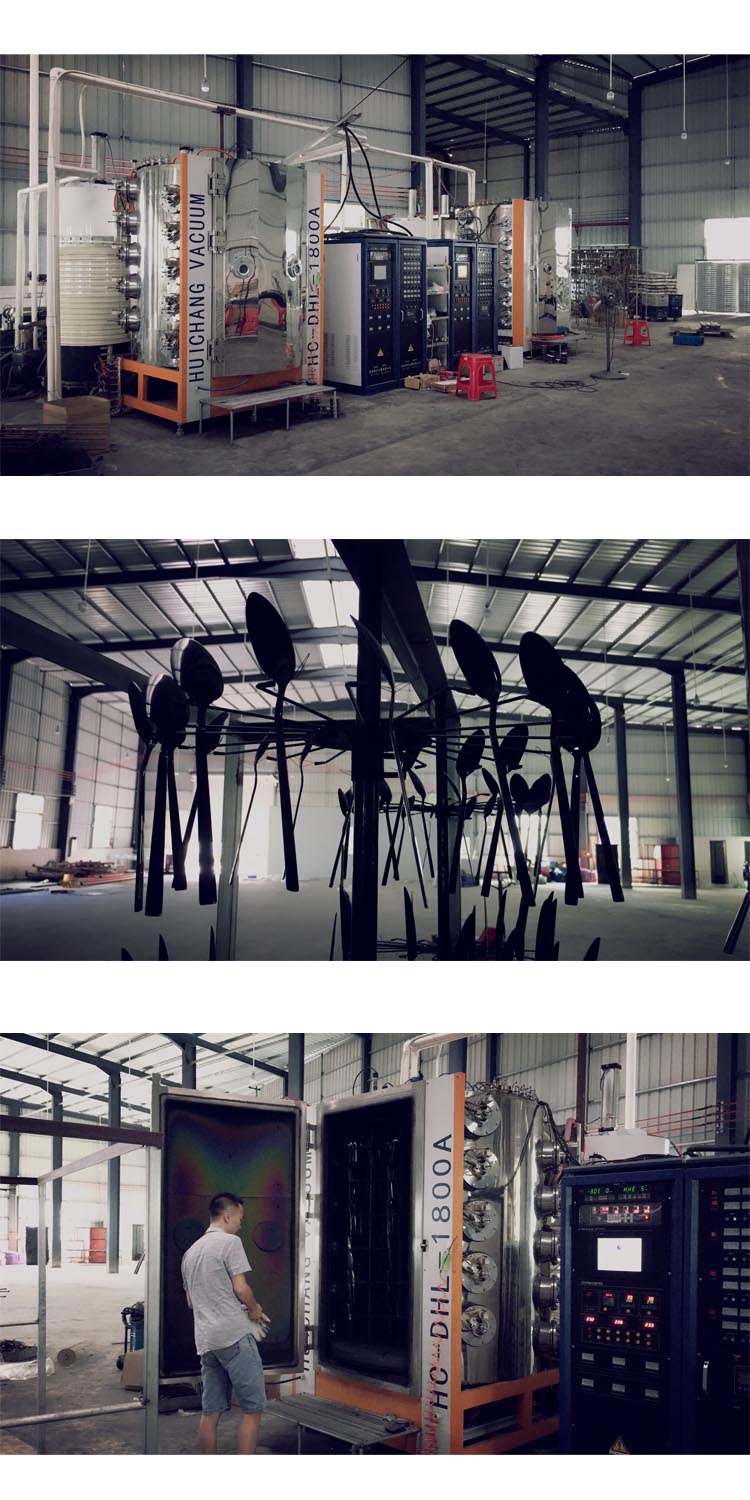PVD cutlery is hot recently in table, but colourful cutlery is looks very werid, will you try? Let's learn and know about it!

What is PVD coating?
PVD stands for Physical Vapor Deposition. It is a technology that carried out under high vacuum and, in most cases, at temperatures between 150 and 500 °C.
PVD is an eco friendly vacuum coating process that is widely applied on different categories of products such as jewellery, door hardware, car accessories and marine fittings.
It is not easy to chip, fade, corrode or tarnish and most importantly, it is food safe.
In the PVD process the high purity, solid coating material (metals such as titanium, chromium and aluminum) is either evaporated by heat or by bombardment with ions (sputtering). At the same time, a reactive gas (e.g. nitrogen or a gas containing carbon) is added; it forms a compound with the metal vapor which is deposited on the tools or components as a thin, highly adherent coating. A uniform coating thickness is obtained by rotating the parts at a constant speed about several axes.
Coating properties (such as hardness, structure, chemical and temperature resistance, and adhesion) can be precisely controlled.
Superior quality that will outlast any traditional finish.
PVD Coatings has proven to adhere best to chrome plated materials and stainless steel. Some materials are not electroplated and the PVD coating is applied directly to the substrate material (Titanium alloys and Graphite). Provided the material is thoroughly chrome plated with a Nickel/Chromium almost any material can be PVD coated.
The PVD coating will not level or fill like an electroplated finish so surface imperfections will still be visible after the coating process. Polished or mirror surfaces are used to produce PVD polished finishes and brushed or satin surfaces to produce satin or matt PVD finishes.
The coating thickness is usually between 0.25 microns and 5 microns for decorative finishes. Thicker coatings can be applied for functional coatings.
Depending on the substrate material (Zinc, Brass, Steel or Plastic) the process temperature can be controlled from temperatures between 150 and 500 °C.
Most of the industry standards are based on neutral salt spray (ASTM B117) or CASS (Copper-Accelerated Acetic Acid-Salt Spray)(ASTM-B368). Zirconium Nitride (ZrN) has shown to surpass 1200 hours of neutral salt spray and over 150 hours CASS on electroplated brass.
Depending on the evaporated metal (target) and the mixture of reactive gases used during the PVD deposition process, different colors can be produced. The range includes but not limited to: Brass tones, Gold tones, Black to Grey, Nickel, Chrome, Copper and Bronze tones. All these finishes are available in a polished, satin or matt finish.
